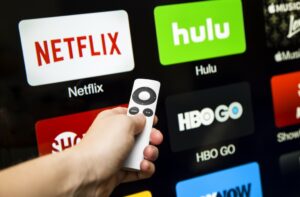Disney’s strategy and what it means for broadcast
Last week it was reported that Rupert Murdoch, as part of his attempt to buy 100% of Sky, may attempt to sell Sky News to Disney in order to keep regulators happy. It has subsequently emerged that Disney may have to bid for the entirety of Sky if the Competition and Markets Authority quashes Murdoch’s bid. While the debate in this country has focused predominantly on Murdoch’s endgame, relatively little attention has been paid to what Disney would be looking to gain here.

Disney’s ambitions highlight several trends within the wider TV sector; they appear to be realising the hitherto missed tricks of traditional broadcasters when staving off the ‘threat’ of SVOD providers such as Netflix and Amazon. And they have plenty of reason to do so.
During the first quarter of this year, FierceCable reported, “Disney’s media networks operating income fell 12% to $1.2 billion due to sagging performance by Hulu [reported as equity], A+E and the broadcasting segment.” Pay-TV has generally found itself lagging behind SVOD providers who themselves have begun to realise new revenue verticals for the format. Within the media sector, there have been whispers of Amazon’s plans to bid on sports content, and of Netflix moving into TV news. It is presumably only a matter of time before these aspirations are manifest.
SVOD providers have also begun to strategise ways to counter the demographic issue for streaming. Baby boomers are quite attached to their TV sets. BARB data stipulates that only half of 16-24s in the UK say they use TV for news, compared to nine in ten of those aged 65+. OTT platforms continue to struggle to tap into what a recent interviewee referred to as ‘TV as Radio.’ When we get home from work, consumers prefer to cook supper with their chosen reporter in the background, rather than the latest Netflix Original. In fact, SVOD only starts to dominate in the 8, 9 and 10 pm slots. This goes some way towards explaining Netflix’s inclination towards news production and distribution. Meanwhile, sport, with its huge viewing numbers across disparate demographics and timezones, could give Amazon the greatest return. Admittedly, this would probably only be a quick fix for Amazon, rather than a long-term solution, considering said numbers are in decline.
According to the Digital TV Research Report, SVOD subscriptions will reach half the pay TV total by 2022 – up from 27% in 2016. In 2017, Netflix spent $6.3 billion on original and acquired content according to data from MoffettNathanson. Amazon, meanwhile, spent $4.5 billion, coupled with the benefit of containing television and film within their growing technological ecosystem. In short, SVOD providers are now breathing down the necks of traditional TV and film content companies such as Time Warner ($8billion), Fox ($8 billion) and Disney ($7.8 billion).
It no longer suffices to be a channel, a content distributor or a production company – you must be all three. Netflix and Amazon were the first to recognise this, but Disney could be the fastest off the mark. Pulling their content from Netflix last year was the strongest possible statement of intent: they want to cut out the middle men. They have been remarkably forthcoming in their hopes of developing their own streaming platform and their stripping of 21st Century Fox assets gives them the perfect opportunity to obtain one.
If successful, Disney will acquire Fox’s 30% stake in streaming platform Hulu, upping its share to a 60% majority. This amounts to a formidable stake in the future subscription streaming war which serves to bolster an already strong foothold in the world of sport. If they were to combine their pending ESPN Plus offering with Hulu, they would be one step closer to becoming an aggregate provider, while also reviving Hulu’s dwindling market share.
In conjunction, the proposed acquisitions of both Sky and 21st Century Fox assets could give rise to the first OTT player capable of harnessing the unrealised opportunity of news journalism. Revenue generated from adverts, subscriptions and production made Disney a TV giant long ago. But to have their own platform hosting their own content, news and sport is to generate a wealth of consumer data. Therein lies the moneymaker.
Whereas traditionally TV was a one-way communication from business to consumer, the future necessarily embodies a two-way interaction in which data is fed back into organisations to inform future decisions. The victors of the content arms race will be those who wield this synergy. So long as Netflix’s viewing numbers are the best kept secret in television, broadcasters must harness their own streaming platforms to generate data, and keep that data close to their chests. Speaking as one of a growing number of ‘cord nevers’, the only conceivable means of winning market share from Netflix and Amazon requires becoming an aggregator of television, film, news and sport. Disney know this, and they appear to be stacking the odds in their favour.
Rhea Mills
Martin Tripp Associates is a London-based executive search consultancy. While we are best-known for our work in the TMT (technology, media, and telecoms) space, we have also worked with some of the world’s biggest brands on challenging senior positions. Feel free to contact us to discuss any of the issues raised in this blog.